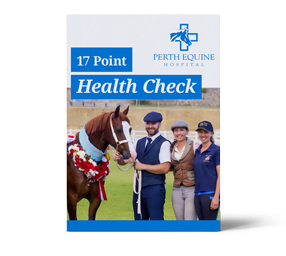Heel pain is a common issue in horses, particularly affecting breeds like Quarter Horses, Thoroughbreds, and Warmbloods. Horses with heel pain may show signs like stumbling, a shortened stride, or even a reluctance to extend their forelimbs when trotting. In more severe cases, lameness might become noticeable, especially when the horse is turning or working on hard surfaces.
But what causes heel pain, and how can we manage it effectively? Let’s break it down.
What is Heel Pain in Horses?
Heel pain, often referred to as “palmar heel pain,” is a broad term that covers discomfort in the back part of a horse’s hoof. This condition can result from various underlying problems, including issues with bones, tendons, ligaments, or other structures in the hoof. Heel pain is actually a leading cause of chronic lameness in horses.
Common Signs of Heel Pain
Owners should look out for these signs that might suggest their horse is experiencing heel pain:
- Stumbling or tripping: Horses with heel pain often trip or stumble because they prefer to land on their toes rather than their heels, which are painful.
- Shortened stride or choppy gait: The horse may have a stiffer or shorter stride, especially at the trot.
- Reluctance to turn or circle: Horses might show more lameness when asked to turn in tight circles or work on uneven ground.
- Lameness: It may be noted as the disease advances, but in the beginning, it can be subtle and only noticed in certain circumstances
- Changes in behavior: A usually cooperative horse may become resistant to being ridden or display irritation when the front feet are handled or poor performance.
Diagnosing Heel Pain
Diagnosing heel pain can be tricky because it doesn’t always have a clear-cut cause. Vets often use several tests to help pinpoint the problem. Here are some common diagnostic methods:
- Physical examination: A thorough exam of the hoof and leg, checking for heat, swelling, or sensitivity to pressure.
- Hoof tester and flexion tests: These tests help identify specific areas of pain. However, they may not always distinguish between different conditions.
- Nerve blocks or diagnostic anesthesia: Injecting anesthetic near specific nerves can help localize the pain to a specific part of the hoof.
- Imaging techniques: X-rays, MRI, or ultrasound may be used to see inside the hoof and identify any damage to bones or soft tissues.
Treatment Options for Heel Pain
Treating heel pain effectively often requires a combination of approaches tailored to the horse’s specific needs:
- Corrective shoeing and trimming: The primary goal is to balance the hoof, support the heel, and reduce pressure on painful areas. For example, raising the heel with special shoes or trimming the hoof to ease breakover (the point where the hoof leaves the ground during movement) can help relieve pain. Shoes like egg bars or wide-web shoes can also distribute weight more evenly and provide cushioning.
- Medication: Anti-inflammatory medications such as phenylbutazone can help reduce pain and inflammation. In some cases, injections directly into the affected joint or bursa (fluid-filled sac near joints) can provide more targeted relief.
- Advanced treatments: For more severe or chronic cases, treatments like regenerative therapies may be considered to promote healing of injured tissues.
Managing and Preventing Heel Pain
Here are some practical tips for managing and preventing heel pain in horses:
- Regular farrier care: Keeping your horse’s hooves balanced and properly trimmed is key to preventing and managing heel pain. Regular visits from a knowledgeable farrier can catch problems early before they develop into more serious issues.
- Monitor your horse’s weight: Overweight horses are more prone to hoof problems. Maintaining an appropriate weight for your horse’s breed and size can help reduce the strain on their hooves.
- Use appropriate footing: Try to provide soft, forgiving footing for exercise, especially for horses prone to hoof problems. Hard, uneven surfaces can increase the risk of injury or worsen existing pain.
- Pay attention to early signs: Catching problems early makes them much easier to treat. Keep an eye out for any changes in gait, behavior, or willingness to work, and consult your vet promptly if you notice anything unusual.
- Maintain regular check-ups: Routine vet visits help catch problems early. Regular foot radiographs can be useful to identify hoof imbalances before they can cause issues. Vets can also provide tailored advice on hoof care, diet, and exercise.
When to Consult Your Vet
It’s important to consult your vet as soon as possible. Early diagnosis and treatment can make a big difference in managing heel pain and preventing it from becoming a long-term issue. Your vet may recommend specific diagnostic tests to determine the underlying cause of the pain and suggest the most effective treatment plan.
Final Thoughts
Heel pain can be a frustrating and challenging issue for both horses and their owners, but with early detection, proper hoof care, and appropriate treatments, many horses can return to their normal activities. Understanding and managing palmar heel pain is crucial for keeping your horse healthy and comfortable.
If you notice any signs of lameness or discomfort in your horse, it’s important to act quickly. Don’t wait – schedule an appointment with our expert team today! Book Now or give us a call at (08) 9479 1800. We’re here to help you every step of the way.
Best Regards,
Dr. Augie
Equine Veterinarian at Perth Equine Hospital
(08) 9479 1800 | augie@perthequinehospital.com.au
https://www.perthequinehospital.com.au/
References:
Kaneps, Andris J. “Diseases of the Foot.” Equine Sports Medicine and Surgery, 2nd ed., edited by Kenneth W. Hinchcliff, Andris J. Kaneps, and Raymond J. Geor, Saunders Elsevier, 2014, pp. 253-273.

Note the broken back hoof-pastern axis, negative palmar angle, underrun heels, and long toe. Shoeing guided by radiographs is useful for addressing hoof imbalance.




